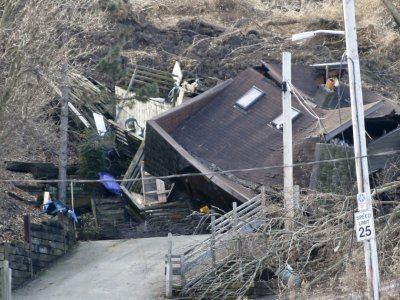
The Penn State DAS array (PSDASA), a subarray of the FORESEE project, is to revolutionize seismic monitoring of the urban area through a novel use of fiber optic cables to improve hazard assessment and increase early warning capability. We propose to develop a 4 km long DAS array leveraging the existing telecommunication fiber-optic cables (unused, so-called dark fiber) underneath the Penn State campus in State College, PA. The objectives of this project are to investigate if seismic ambient noise can provide the real-time map of the subsurface geology in such an urban area and if there are reliable precursor signals for environmental hazards (e.g., rain/flooding, subsidence/sinkholes on campus). The PSDASA will be the first study to use the existing dark fiber cables for seismic monitoring of underground environmental changes on the East Coast, an area where there are many densely located cities. If successful in the Penn State urban area, we’ll plan to develop a DAS array in a modern metropolitan area (e.g. Pittsburgh) by leveraging existing dark fiber cables for managing the subsurface geohazards for future ‘smart’ cities.
Resulting Funding
- SitS: Collaborative Research: Understand and forecast long-term variations of in-situ geophysical and geomechanical characteristics of degrading permafrost in the Arctic, National Science Foundation, $769,854
- S&CC: Smart & Connected Commun, XC-Crosscutting Activities Pro, CIVIC-PG Track A: Leveraging Existing Fiber-Optic Cables to Identify and Manage Urban Environmental Hazards, National Science Foundation, $50,000
- Leveraging existing fiber-optic cables to identify and manage urban environmental hazards, National Science Foundation Award #2322198, $937,000
Resulting Publications
- Spica et al., 2022, PubDAS: a PUBlic Distributed Acoustic Sensing datasets repository for geosciences
- Shen J., and Zhu T., Seismic noises by telecommunication fiber optics reveal the impact of COVID-19 measures on human activities, The Seismic Record 1 (1): 46–55. https://doi.org/10.1785/0320210008
- Hone S., and Zhu T., Seismic observations of four thunderstorms using an underground fiber optic array, Seismological Research Letter, 92 (4): 2389–2398.
- Zhu, T., Shen, J., and Martin, E. R.: Sensing Earth and environment dynamics by telecommunication fiber-optic sensors: an urban experiment in Pennsylvania, USA, Solid Earth, 12, 219–235, https://doi.org/10.5194/se-12-219-2021, 2021.
- Jakkampudi S.**, Shen, J., Li. W.**, Dev A.**, Zhu, T., and Martin, E. R., (2020) Footstep Detection in Urban Seismic Data with a Convolutional Neural Network, The Leading Edge.
- Zhu T., and D.J. Stensrud, 2019. “Characterizing thunder-induced ground motions using fiber-optic distributed acoustic sensing array,” Journal of Geophysical Research: Atmospheres, 124, 12810-12823
Researchers
Patrick J. Fox

Eileen Martin








